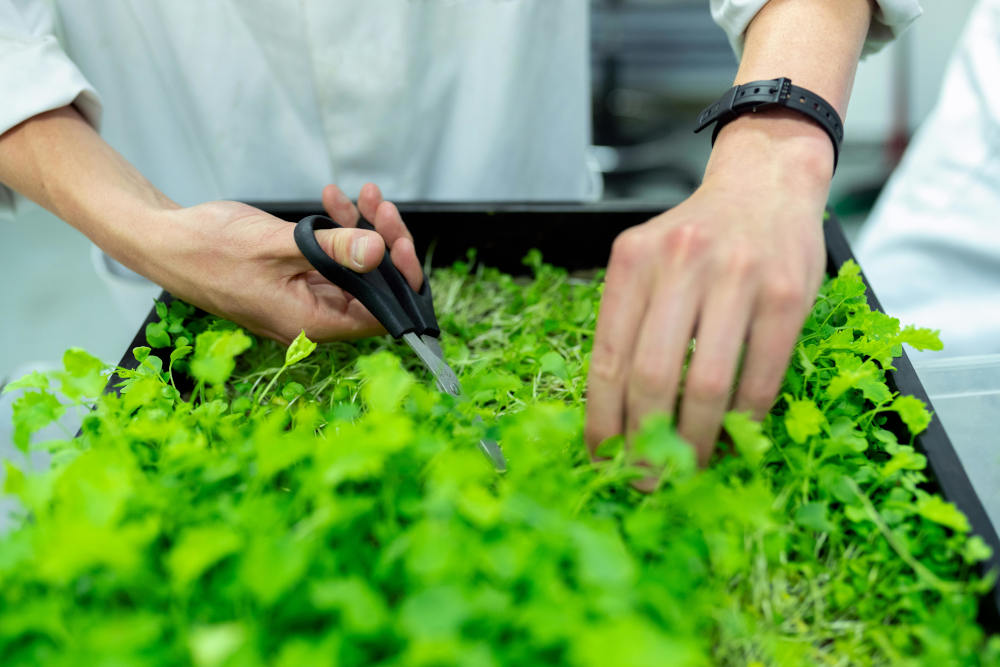
Living in USDA Hardiness Zone 6, which spans much of the central and eastern U.S., gives gardeners a moderately long growing season—typically from mid-April to mid-October. Most areas have an average last frost date around May 1 and a first frost around November 1, though local conditions may shift those by a week or two (ufseeds.com).
Yet, many crops—especially vegetables and tender flowers—require starting seeds indoors before outdoor conditions are warm enough to support their growth. The key is to count backward from your local last frost date to determine when to sow various seeds indoors. This guide provides clear-schedule breakdowns, growing tips, and troubleshooting advice.
Panaprium is independent and reader supported. If you buy something through our link, we may earn a commission. If you can, please support us on a monthly basis. It takes less than a minute to set up, and you will be making a big impact every single month. Thank you!
1. Why Start Seeds Indoors in Zone 6?
-
Extended growing window: Seeds for slower-maturing plants need more time than the outdoor season allows.
-
Greater control: Indoor starting offers consistent conditions—ideal for germination.
-
More variety: Access to specialty heirloom or unusual varieties not available as transplants.
-
Earlier harvests: Your garden produces sooner, making the most of the season.
2. Zone 6 Seed Starting Timeline
Based on an average last frost of May 1, here is a crop-specific timing guide:
🥕 10–12 Weeks Before Frost (Mid‑February to Late February)
Ideal for slow- to very slow-growing crops and cold-season perennials:
-
Celery, leeks, onions, parsley
-
Perennial herbs & flowers: lavender, rosemary, thyme, Oregano, coneflowers, daisies (thecottagevegetable.com)
🌶️ 8–10 Weeks Before Frost (Late‑February to Mid‑March)
For warm-season and mid-season crops:
-
Tomatoes, peppers, eggplant (sowtrueseed.com)
-
Brassicas: cabbage, broccoli, cauliflower
-
Biennials: foxgloves, hollyhocks (thecottagevegetable.com)
🥬 6–8 Weeks Before Frost (Mid‑March to Late‑March)
Crops that mature faster:
-
Cucumbers, squash, basil, kale, Swiss chard (johnnyseeds.com, thecottagevegetable.com)
-
Annual flowers: zinnias, marigolds
🌱 4–6 Weeks Before Frost (Late‑March to Mid‑April)
For quick-sprouting annuals and tender greens:
-
Sunflowers, cosmos, melons, lettuce
🌿 2–4 Weeks Before Frost (Mid‑April to Late‑April)
For heat-loving crops or those suitable for direct sowing once soil warms:
-
Beans, beets, peas, corn, pumpkins, direct-sown flowers (gardeningknowhow.com, johnnyseeds.com)
3. Step-by-Step Seed Starting
A. Supplies You’ll Need
-
Seed trays or small pots with drainage
-
Sterile seed-starting mix
-
Seed packets (of high viability)
-
Labels and markers
-
Bottom heat mat (for warmth-loving seeds)
-
Grow lights or a sunny window
-
Humidity dome or plastic wrap
-
Small fan for airflow
B. Planting Process
-
Prepare and moisten the starter mix to a damp, sponge-like consistency.
-
Sow seeds at the proper depth (usually 2× the seed’s diameter). Fine seeds may require surface sowing (ufseeds.com, bhg.com, apnews.com).
-
Capitalize bottom heat: maintain 70–85 °F for best germination in warm-season crops .
-
Cover trays to retain moisture until seeds germinate.
-
Provide light: 12–16 hours daily under grow lights to avoid leggy seedlings (brightlanegardens.com, bhg.com).
-
Ventilate using a fan to prevent damping-off disease (bhg.com).
-
Water gently, keeping the soil evenly moist but never saturated.
-
Thin seedlings to one per cell after true leaves appear (thecottagevegetable.com).
-
Pot up into larger containers after 2–3 weeks if roots show through.
4. Hardening Off & Transplanting Outdoors
-
Start hardening off 7–10 days before planting.
-
Day 1: 1–2 hours in shade
-
Gradually increase exposure
-
Finish in full sun, outdoor overnight stays
-
-
Plant outdoors only after:
-
Last frost date passed
-
Soil temperature ≥60°F
-
Night temperatures regularly ≥50°F (bhg.com)
-
Consider waiting a few weeks beyond the last frost to allow soil to warm more—and reduce disease/pest risks (almanac.com).
5. Example Seed-Starting Calendar for Zone 6
Assuming a May 1 last frost:
| Weeks Before Frost | Date Range | Seeds to Start Indoors |
|---|---|---|
| 12 | Feb 15–28 | Celery, leeks, onions, parsley, lavender, rosemary |
| 10 | Feb 22–Mar 10 | Tomato, pepper, eggplant, broccoli, brassicas |
| 8 | Mar 1–15 | Squash, basil, cucumbers, kale, annual flowers |
| 6 | Mar 15–31 | Zinnias, marigolds, cosmos, sunflowers |
| 4 | Mar 31–Apr 15 | Direct-sow tender crops indoors, later to plant |
| 2 | Apr 15–30 | Beans, corn, pumpkins indoors/early outdoor sowing |
Tailor this schedule to your specific last frost date and seed variety requirements.
6. Direct-Sow vs. Indoor Start
Direct Sow Outdoors (Spring/Summer)
-
Peas, carrots, beets, radishes, lettuce, spinach, beans, corn, squash (ufseeds.com, sowtrueseed.com, gardeningknowhow.com)
-
Annual flowers like poppies and calendula can go direct into garden beds
Indoor First (Then Transplant)
-
Tomatoes, peppers, eggplant
-
Brassicas (broccoli, cabbage)
-
Perennial flowers and herbs with long germination (sowtrueseed.com)
7. Common Mistakes & How to Avoid Them
From Better Homes & Gardens – avoid these common pitfalls :
-
Not enough light → add grow lights, keep close to seedlings.
-
Starting seeds too early → stick to 6–8 weeks before transplant.
-
Old seeds → perform a germination test or buy fresh.
-
Planting too deep → follow packet instructions; many seeds need light.
-
Not labeling → always mark pots clearly.
-
Improper watering → keep moist, avoid waterlogging.
-
Failure to thin → remove extras early.
-
Waiting too long to pot up → transplant when root-bound.
-
Fertilizing too early/late → wait until true leaves appear.
-
Skipping hardening off → acclimate seedlings gradually.
8. Extra Tips for Indoor-Sown Seedlings
-
Temperature control: cooler for leafy greens (~65–70°F), warmer for solanaceous crops.
-
Use bottom heat mats for peppers and tomatoes for robust germination.
-
Label everything clearly to avoid mix-ups.
-
Rotate trays for even light distribution.
-
Re-seed gaps quickly; maintain succession planting.
-
Use plastic domes initially, then vent progressively after germination.
9. Extending the Season Further
-
Cold frames or hoop houses can allow for an earlier transplant date.
-
Black plastic mulch helps warm soil for early plantings.
-
Floating row covers shield tender seedlings from cold and pests.
-
Container gardening allows moving plants indoors during cold nights.
10. Recap: Your Zone 6 Indoor Seed Starting Blueprint
-
Mid-Feb to Late-April: Build your indoor seed schedule around your last frost.
-
10–12 weeks out: slow growers, perennials, autumn bloomers.
-
8–10 weeks out: nightshade veggies and brassicas.
-
6–8 weeks out: leafy greens and annual flowers.
-
4–6 weeks out: tender annuals and heat-loving veggies.
-
-
Direct-sow hardy crops and fast growers as soon as soil is workable.
-
Transplant only after soil and air are consistently warm.
-
Practice good indoor seed hygiene and prevent common problems.
Final Thoughts
Zone 6 provides a generous growing season, but starting seeds indoors strategically lets you maximize every moment. With careful planning, proper setup, and awareness of seasonal changes, your garden can burst with vitality and produce.
Was this article helpful to you? Please tell us what you liked or didn't like in the comments below.
About the Author: Alex Assoune
What We're Up Against
Multinational corporations overproducing cheap products in the poorest countries.
Huge factories with sweatshop-like conditions underpaying workers.
Media conglomerates promoting unethical, unsustainable products.
Bad actors encouraging overconsumption through oblivious behavior.
- - - -
Thankfully, we've got our supporters, including you.
Panaprium is funded by readers like you who want to join us in our mission to make the world entirely sustainable.
If you can, please support us on a monthly basis. It takes less than a minute to set up, and you will be making a big impact every single month. Thank you.































0 comments